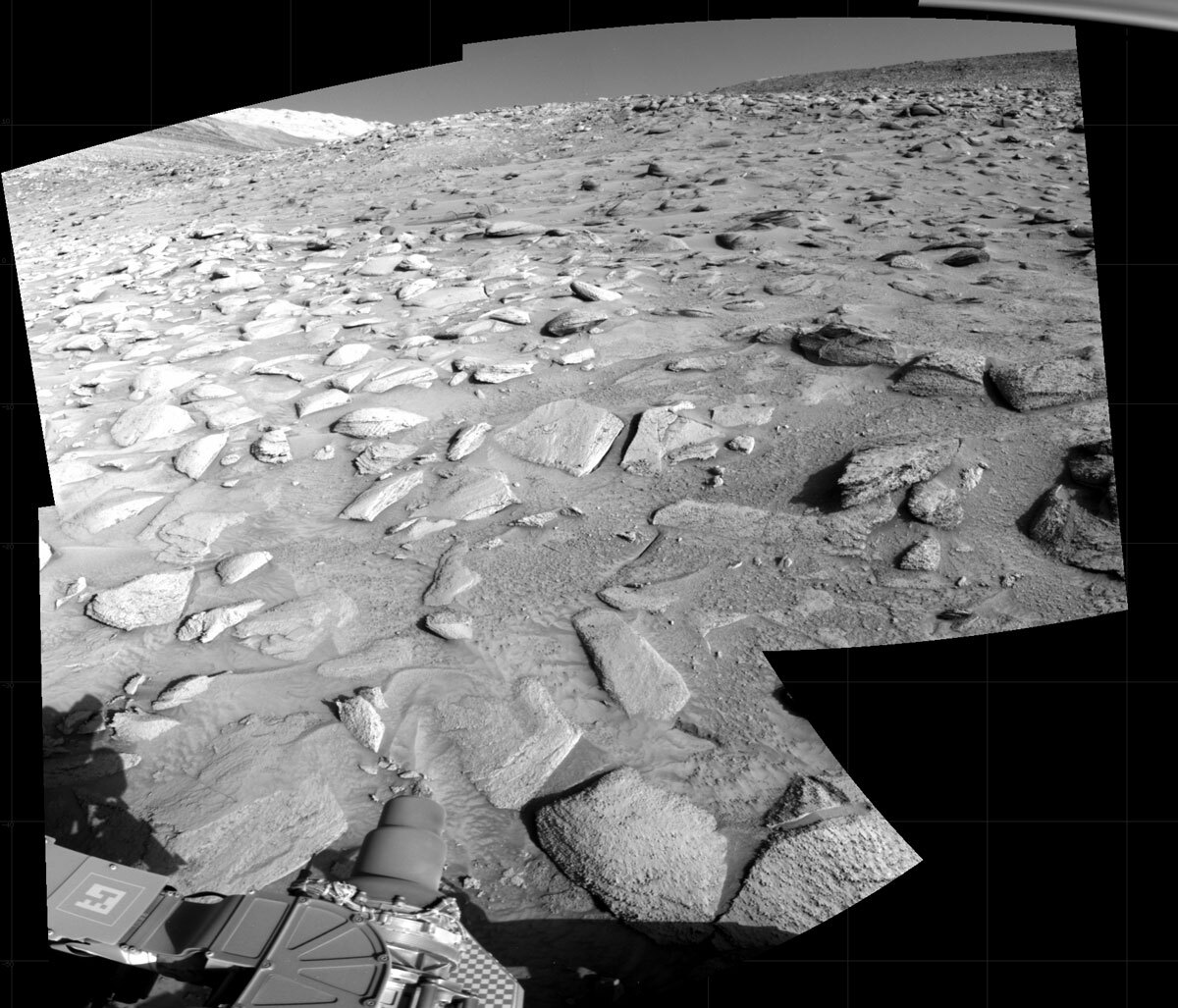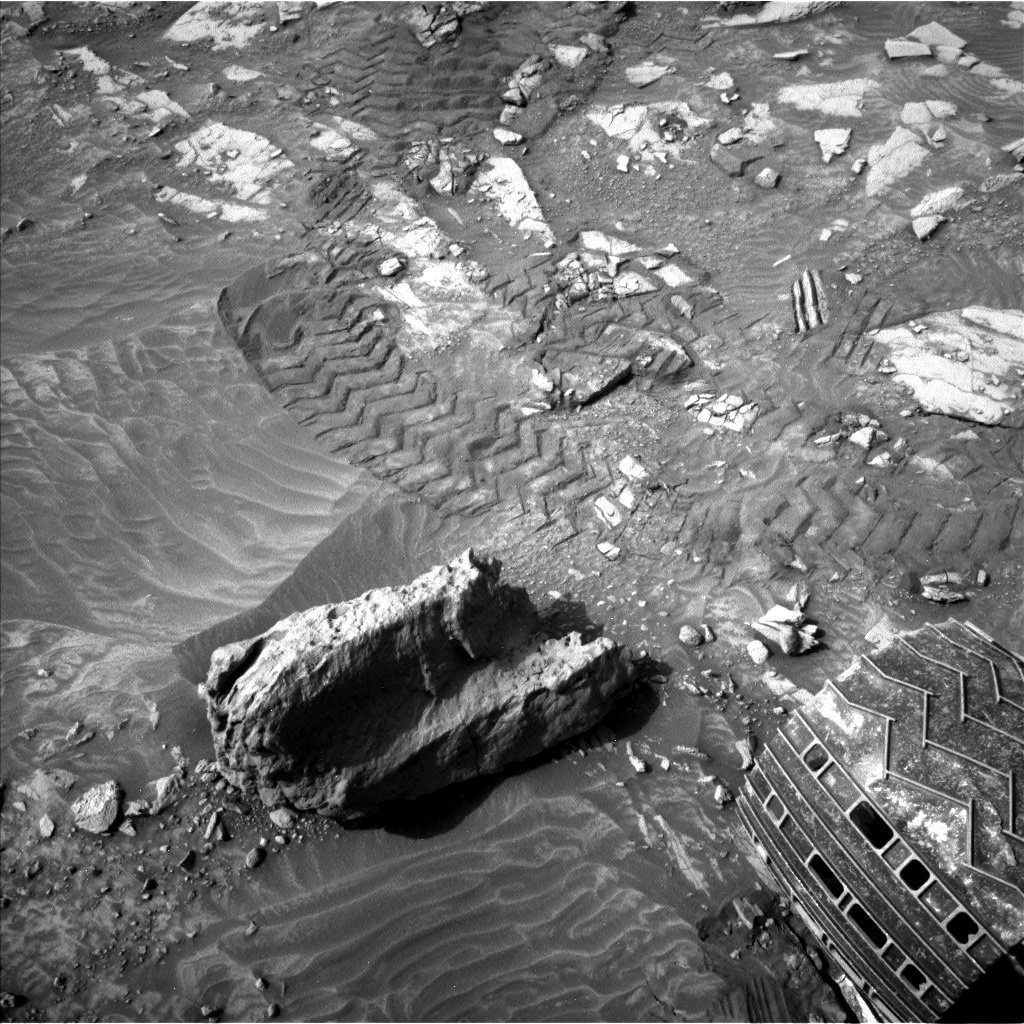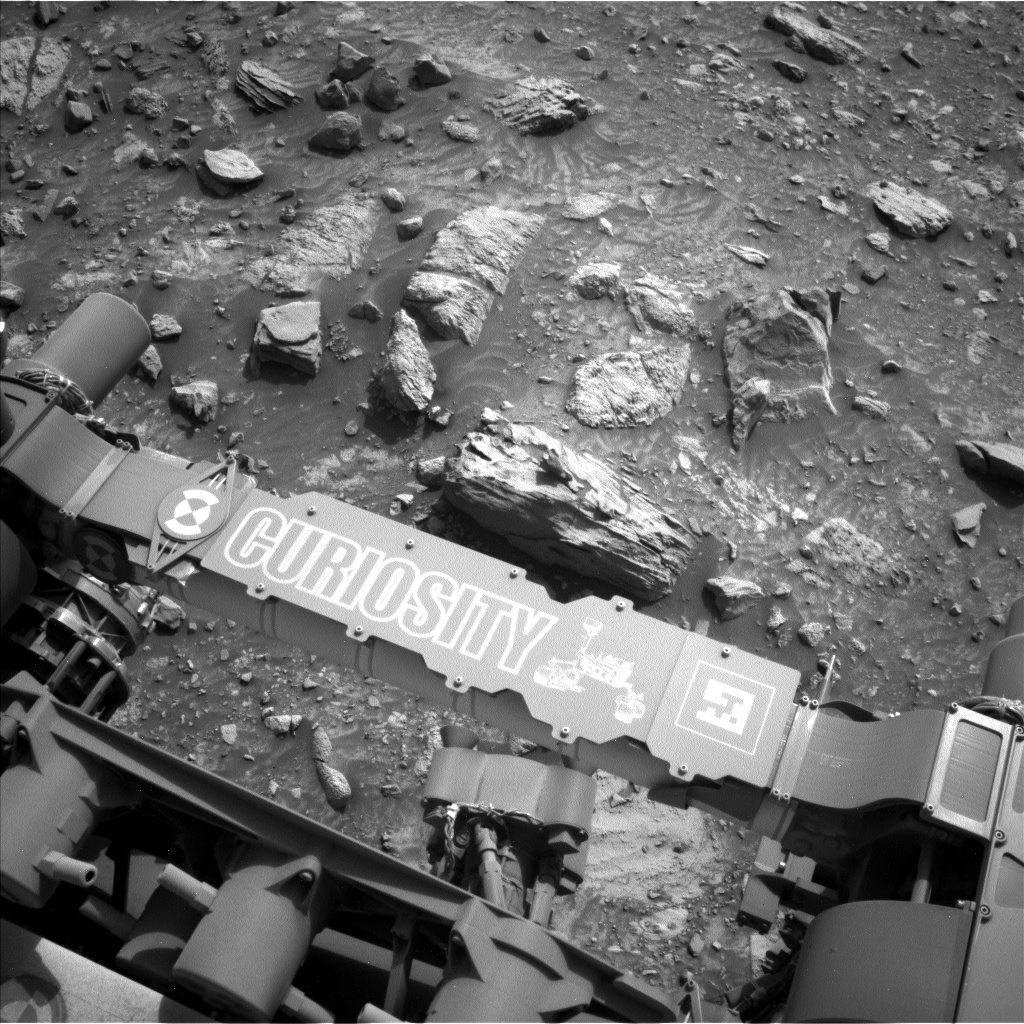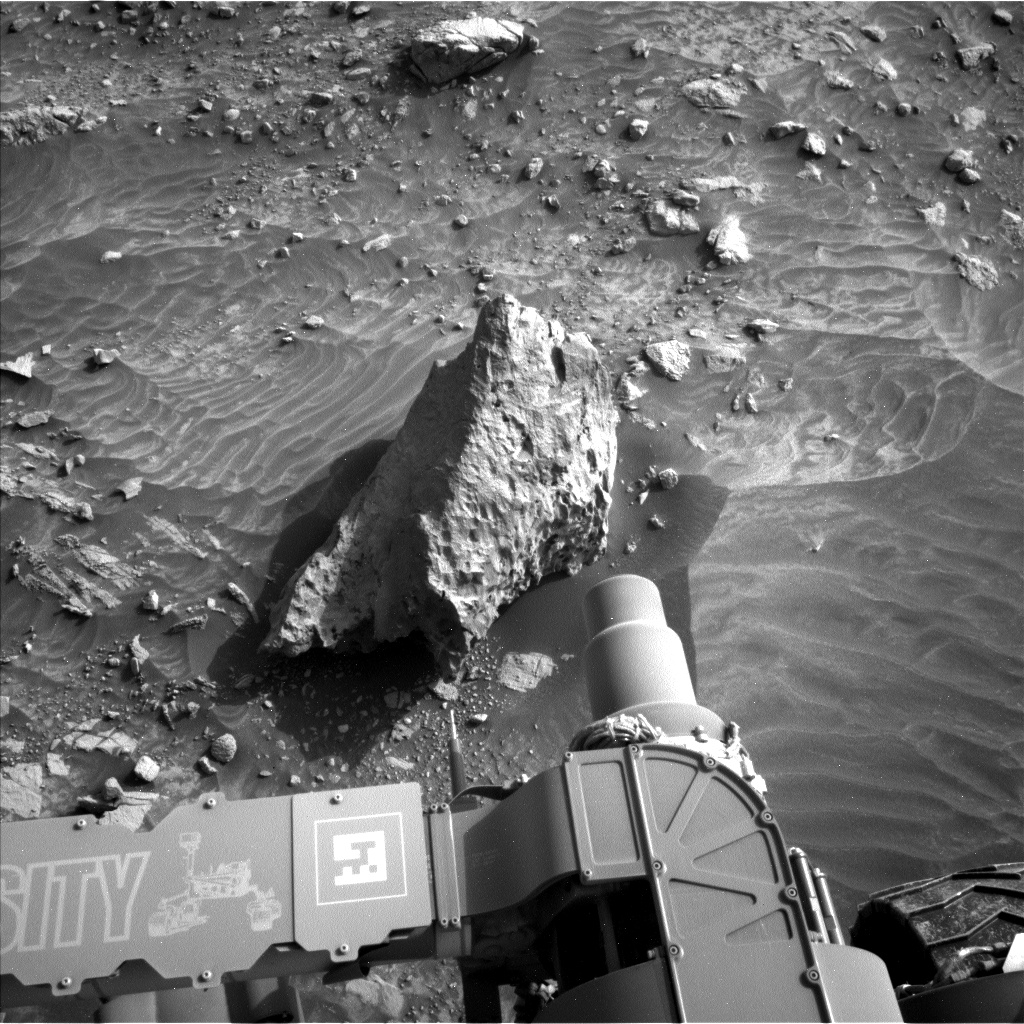2 min read

We arrived this morning to Curiosity at a new location with some bright toned, and more rounded rocks in our vicinity. Unfortunately, we could look but not touch as our wheels were positioned such that we could not safely unstow the arm for contact science. We typically have a large suite of arm activities in weekend plans but with those now removed, the science team had ample power and time to do remote sensing.
On the first sol, we will use Mastcam to image the target “Ekeni,” a target just in front of our right front wheel with interesting rhythmic textures – could they be due to how the sediment was originally emplaced or how it has since eroded? Similarly, the target “Fazendinha” appears to represent a transition between rock textures. These high resolution Mastcam images will allow our scientists to consider the history of these blocks. We’ll also use our ChemCam instrument to provide compositional information for the target “Sao Miguel,” giving us our first “taste” of the bedrock in front of us.
On the second sol, we continue to investigate the area around us with more Mastcam and another ChemCam LIBS observation on “Sao Tome” before taking a short drive – a scoot of just a few meters – to a potential sampling location. Mastcam will document this new location with a 360-degree mosaic, capturing all the terrain that surrounds us.
On the third sol of the plan, ChemCam will use its autonomous target selection capability, AEGIS, to collect compositional data from our new location.
As is typical for our weekend plans, we will take a suite of environmental monitoring measurements – searching for dust devils with our navigation camera, studying the dust opacity in the atmospheric with Mastcam and our engineering cameras, as well as our regular cadence of REMS observations.
In addition to these remote sensing activities, we also planned two CheMin activities to set ourselves up for potential sampling next week. Both activities are intended to ensure our instrument is as clean and prepared as possible to accurately measure mineralogy. We’ll vibe CheMin’s inlet funnel, as well dump any potential remaining sample from the cell we intend to deliver our next sample to.
Written by Elena Amador-French, Science Operations Coordinator at NASA's Jet Propulsion Laboratory







